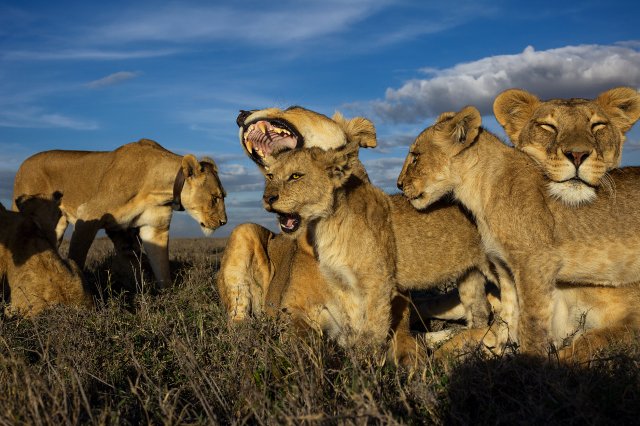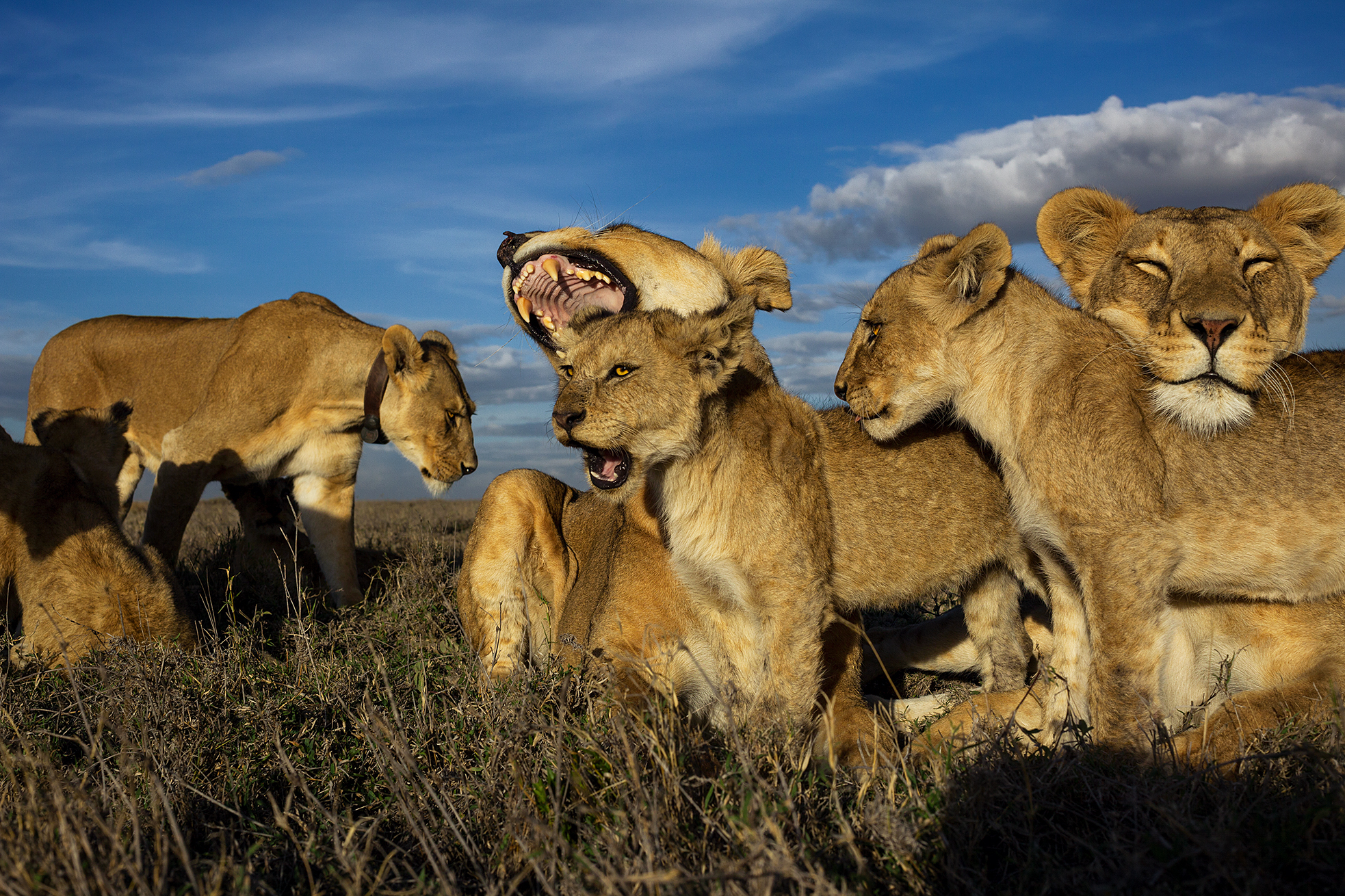Why Wildlife Photography Matters in a Post-Truth Era
Photographs by MICHAEL “NICK” NICHOLS
Text and production by ALEXANDRA GENOVA
When the term “alternative facts” was coined, scientists, climate change campaigners and anyone with an interest in preserving the planet took a collective sigh of despair. For the post-truth era is not just damaging for political integrity, it threatens the survival of bio-diversity as we know it.
So what can the experts fight with, when they can’t fight with facts? “We go back to the pictures,” veteran wildlife photographer Nick Nichols tells TIME. “So as long as we’re in this cycle of lies, the pictures can actually stand up again and do some more work. I still believe that [photography] plays—I hate to say it this way—unfortunately the strongest role, because data and science doesn’t necessarily hit you emotionally.”
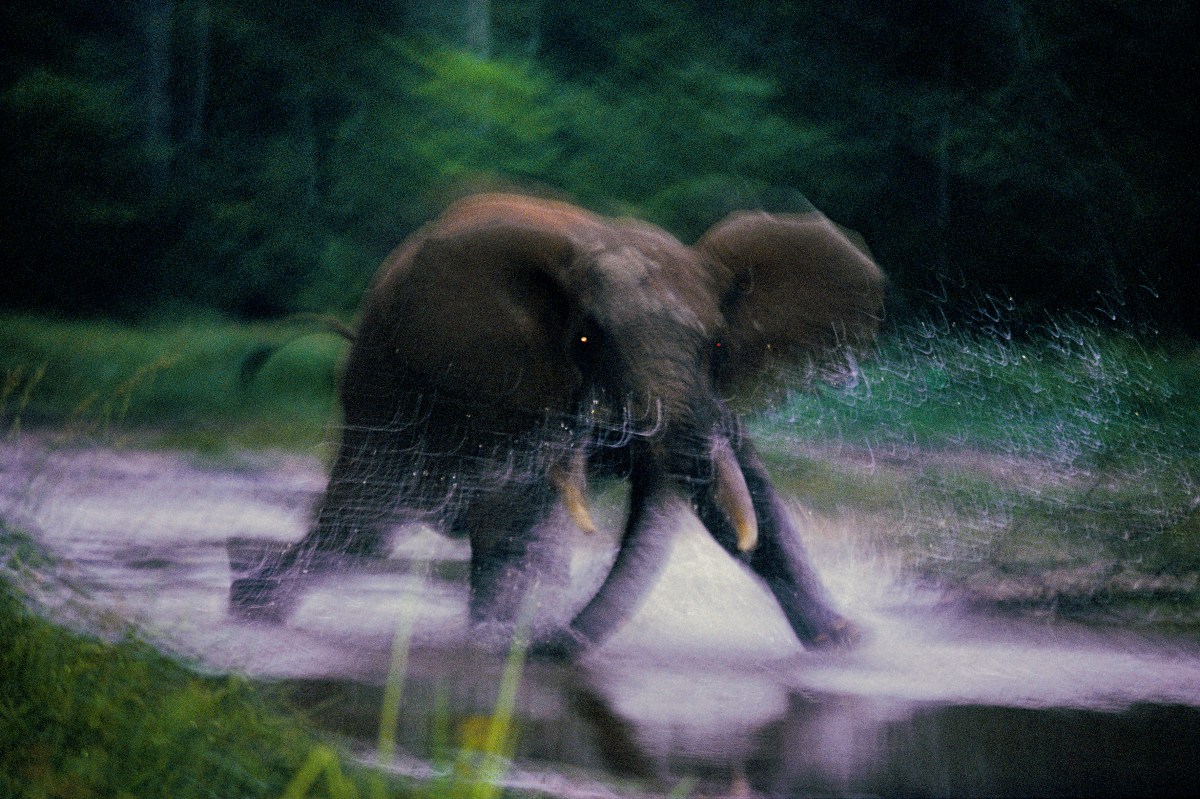
Charging elephant, Dzanga Bai, Central African Republic, 1993.
Nichols has carved out a 40-year career by making photographs as muscularly powerful as the gorillas and lions he documents. They artfully and honestly force the viewer to understand the meaning of “wild” and why it must be protected. His 27 stories for National Geographic have variously heightened the public consciousness on subjects including old growth Red Woods, the world’s remaining tigers and the emotional relationship of the elephant family.
All sought to turn up the heat on conservation efforts using effective imagery. “I’m looking for intimacy and energy,” says Nichols, whose biography A Wild Life, published by Aperture and written by Melissa Harris, is out now. “Because you’re not going to capture anybody’s imagination with boring pictures, it’s that simple. And that’s kind of my personality. So it was a good fit.”
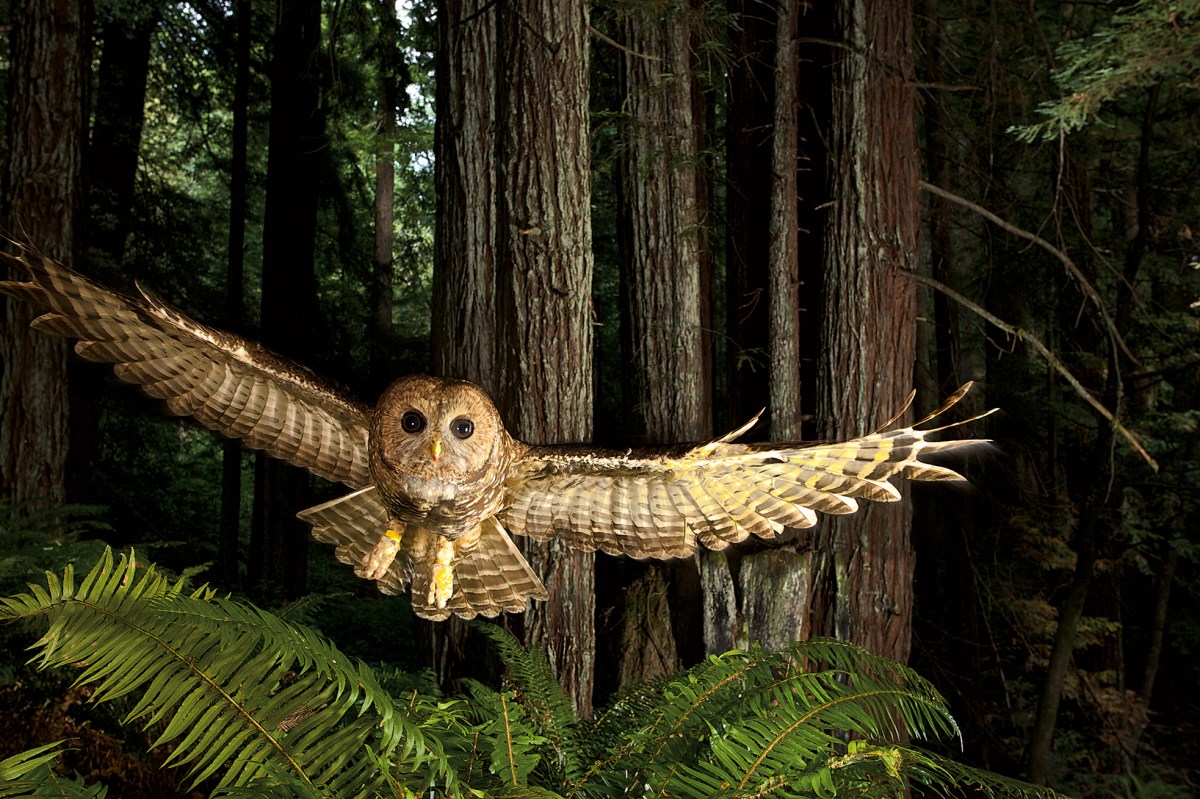
Northern spotted owl, Humboldt County, California, 2008.
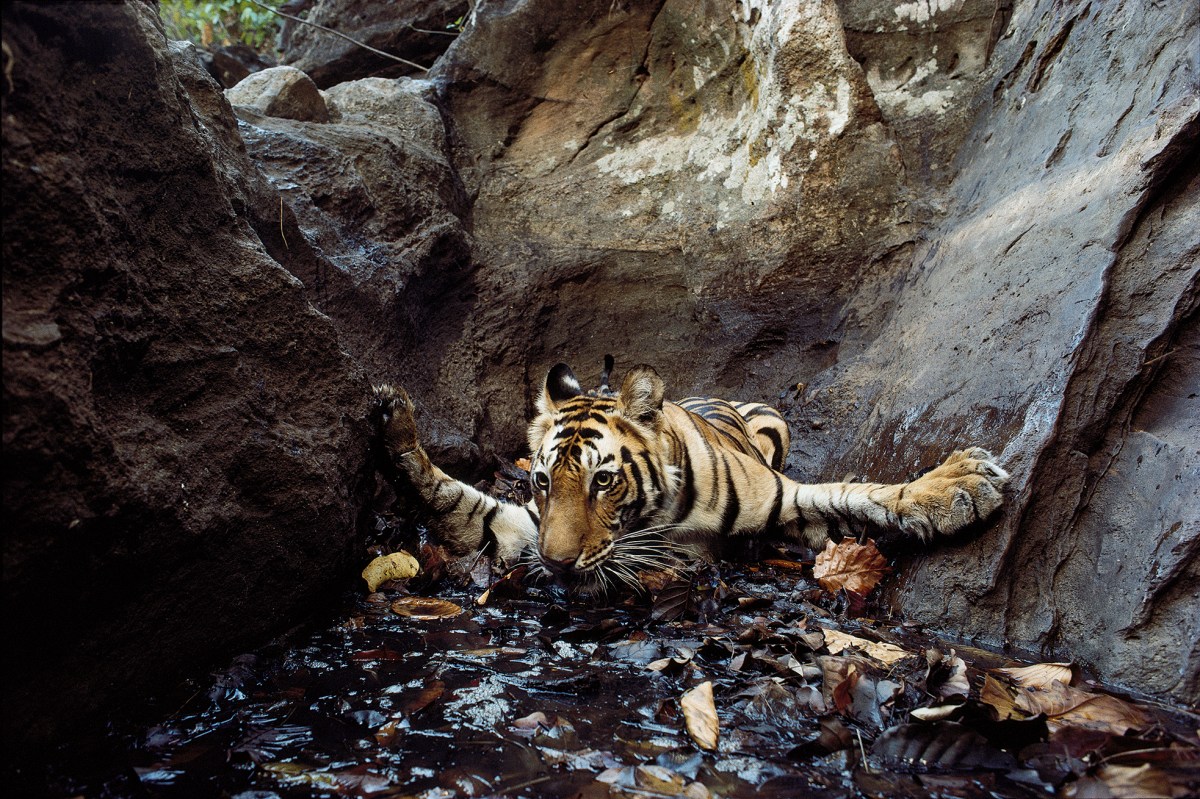
The tiger Bachhi (camera-trap photograph), Bandhavgarh National Park, India, 1996.
The Alabama native, now 64, grew up in a broken home. His father was a functional alcoholic who left when he was three and his mother was a binge alcoholic who raised three kids in poverty with a fourth grade education. “I started living in a fantasy world, reading John Carter and Edgar Rice Burrows. I used to escape into what we called ‘the woods’,” says Nichols. “And that’s just a couple of acres of plot behind the house in Alabama, but it became as big as the African rain forest.”
Without realizing it, he was training himself to survive in tough climates. “Where some people are not comfortable, the jungle of Congo became just like home to me,” he says. “Even though the swamps you walk in with your sandals have snakes and crocodiles, you don’t focus on that. You focus on, ‘Well I’m here to get pictures so it doesn’t matter.'” Nichols had malaria 25 times before he was 35 and languished in countless remote hospitals with other life-threatening illnesses. But, he says, he’s much more at ease in the wilderness where there are what he calls “predictable violence.” He adds, “I literally loved being in a place that drove most people crazy when they go there.”
Nichols ultimately used this talent for physical detachment to give a voice to the voiceless. “I got there through the animals teaching me—and Jane Goodall teaching me,” he says. “I didn’t want to just jump from one assignment to the next, I wanted everything to be cumulative. And once I did the gorillas [begun in 1981] early in my life I thought, ‘Wow, I can be a voice for them, they need somebody like me. Instead of devoting my talents to illustrative stories in Rolling Stone, you can be lucky enough to think—to fool yourself into thinking—you have cause.”
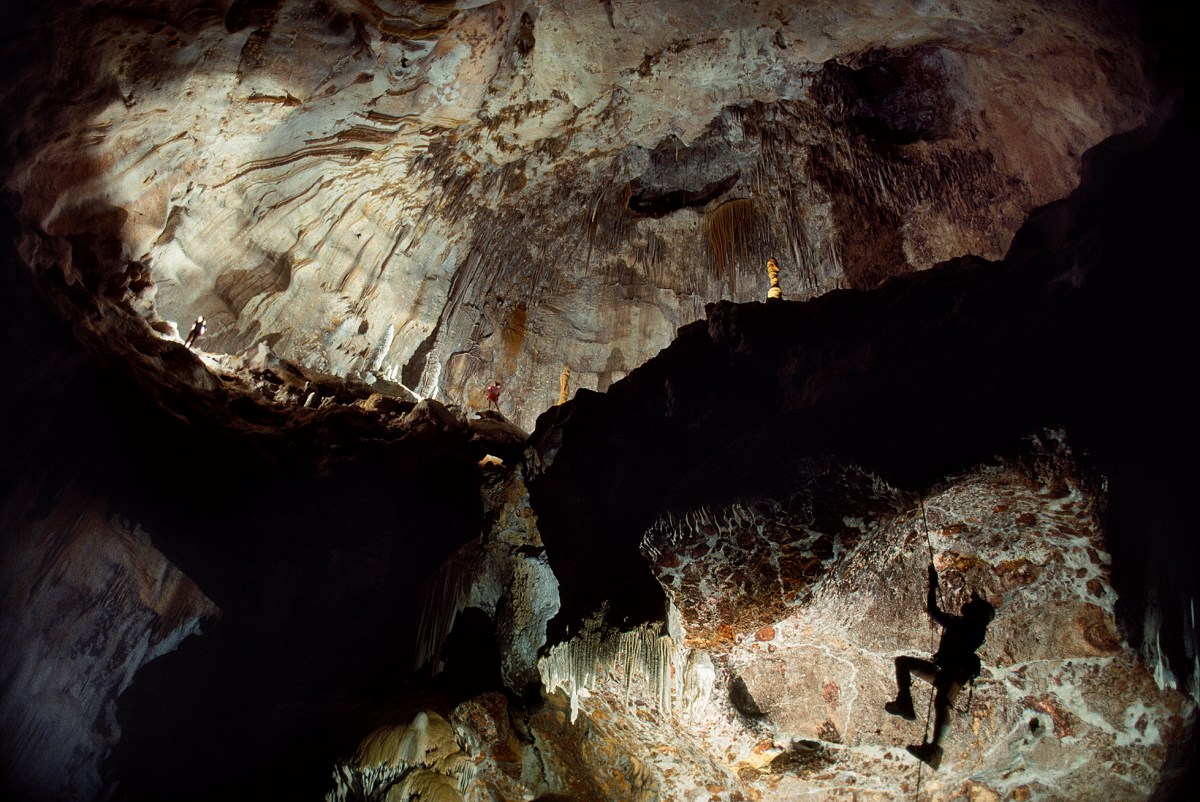
Temple of Dagon, Lechuguilla Cave, Carlsbad Caverns National Park, New Mexico, 1990.
His “cause” has resulted in four decades of highly impactful reportage. In 1999, Nichols joined Nat Geo explorer Michael Fay on an arduous 2,000 mile trek from the Congo in central Africa to Gabon. He joined Fay at five points along the journey for two to three weeks at a time and it was here that Nichols took the now iconic image of hippopotamuses swimming in the Atlantic Ocean; an astonishing, poetic sight that few had seen before. The picture—and the accompanying body of work on central Africa—led Gabon President Omar Bongo to create a system of 13 national parks that now cover 11% of the country. The pictures were also used by conservationists to secure the expansion of a national park in the Central African Republic. For good reason, Surfing Hippos was named one of TIME’s Most Influential Images of All Time.
The project, which Nichols says is his most “substantial work,” also served to crystalize what is at the heart of all conservation efforts: land. “Although we focus on mega fauna—you focus on tigers or grizzly bears or elephants or spotted owls because they’re the hook—all that matters in conservation really is land,” says Nichols. “Even with our deluge of images, people still are moved by imagery. And then let someone else follow me with substance; that’s why I worked so much with really solid scientists.”
To that end, Nichols is more a photojournalist than a wildlife photographer. Though he admits he made mistakes in his earlier career —manipulating situations to further the picture—he comes from a journalism background and learned how to respect the truth of the wild. “I did do some things in my career where I was ashamed of pushing my subject too hard,” he says. “And I’m like; ‘Wait a minute. I’m not going to do that.’ When I decided that, my subjects always gave me what I needed.” He learned to live by the old Rolling Stones adage: You can’t always get what you want / But if you try sometimes / You just might find / You get what you need.
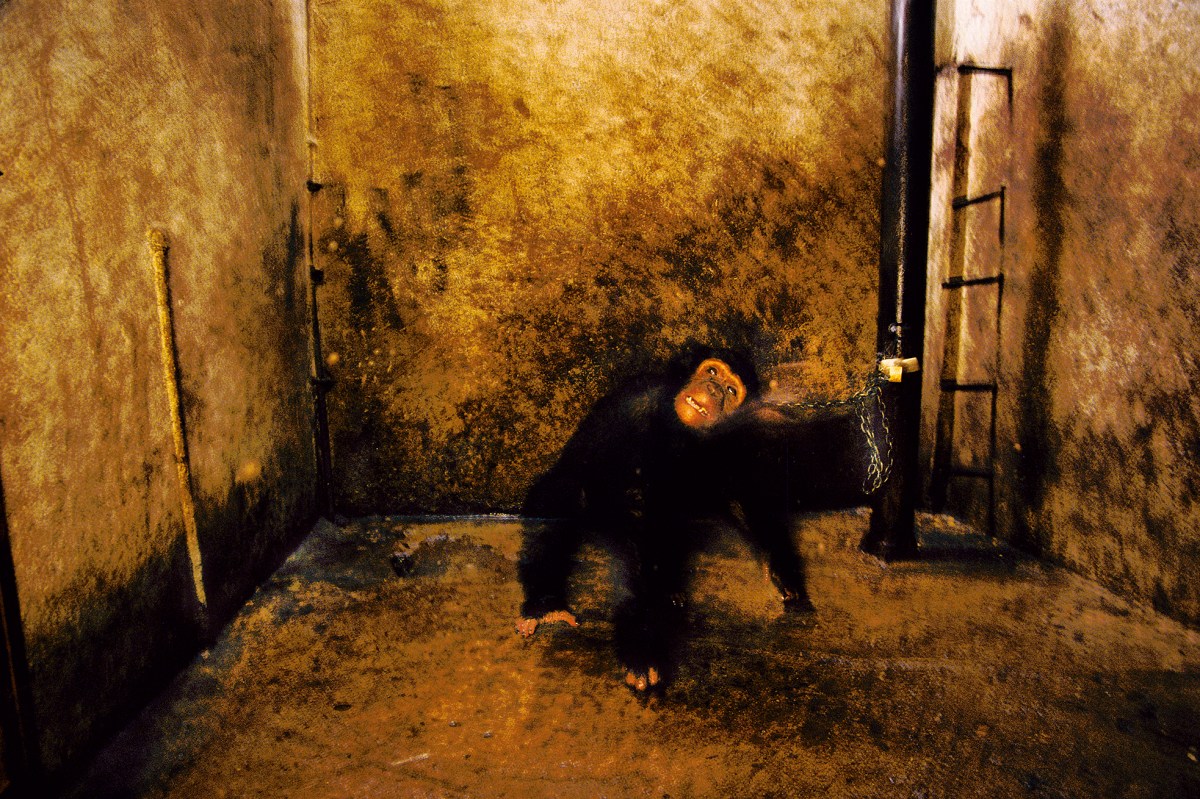
The chimpanzee Whiskey, chained in a garage, Bujumbura, Burundi, 1989.
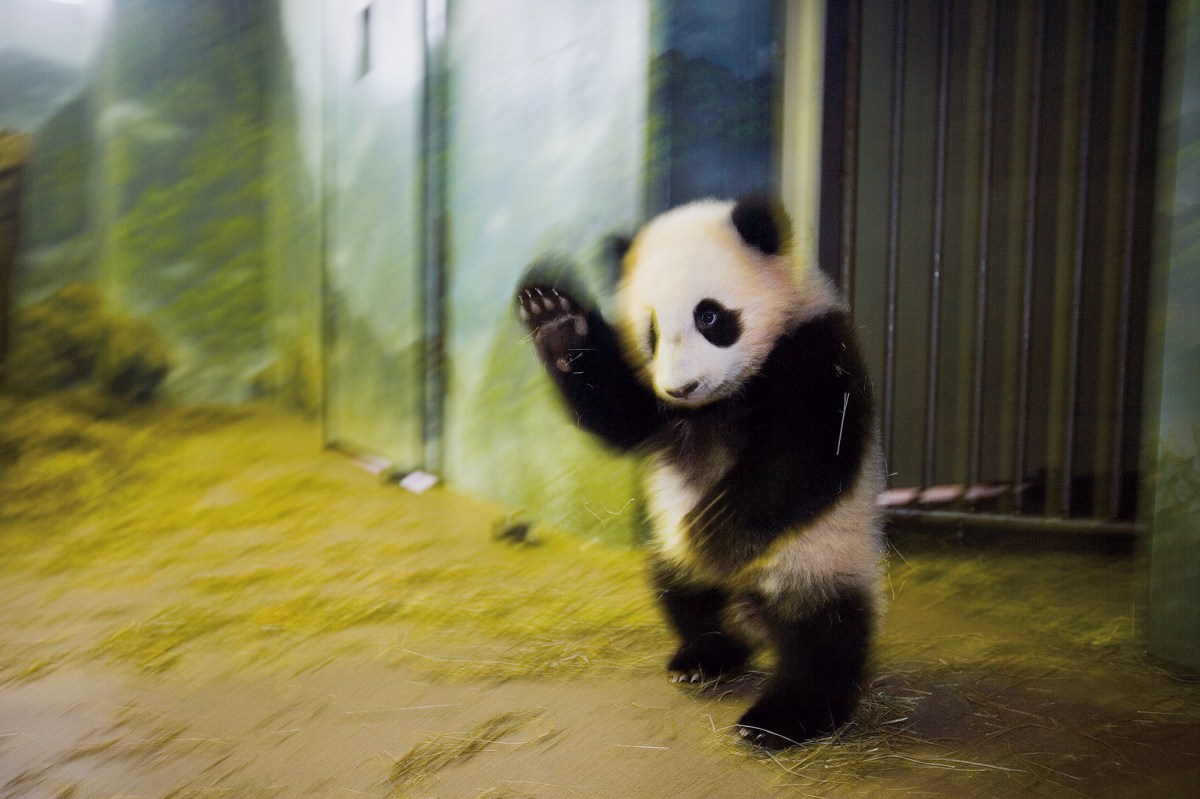
Giant panda, National Zoo, Washington, D.C., 2006.
The ethical quagmire of genuine wildlife photography reflects the difficult truth of how humans really want to co-exist with wild animals. “The bottom line is humans like wildlife,” he says. “But we don’t really want it to be wild, we want it to be pretty much packaged and safe. We don’t want a wolf to kill our dogs and we don’t want a mountain lion to kill our cat.”
In contrast, the wild that Nichols sought wasn’t tidy and sometimes wasn’t palatable. “We want cute and cuddly tigers and lions but they’re much better off when they’re wild and savage and driven by their instincts,” he says. “There is no morality in the natural world; a male lion will kill cubs so the female will breed with him the next day and have his cubs.” To respect this natural order is to respect the ability of the natural world to balance itself out—without human intervention.
Indeed, if Nichols has one thing to share with eager photojournalists who follow him, it is this. “As a young photographer I was driven to succeed and to satisfy my client, or my desire,” he says. “But over time, I just became very relaxed about failing. And I didn’t fail—because I just stayed at it. So you can just let it come to you and then when you do that, it’s better. It’s just simply better. And that’s the great lesson to share; is to let it happen.”
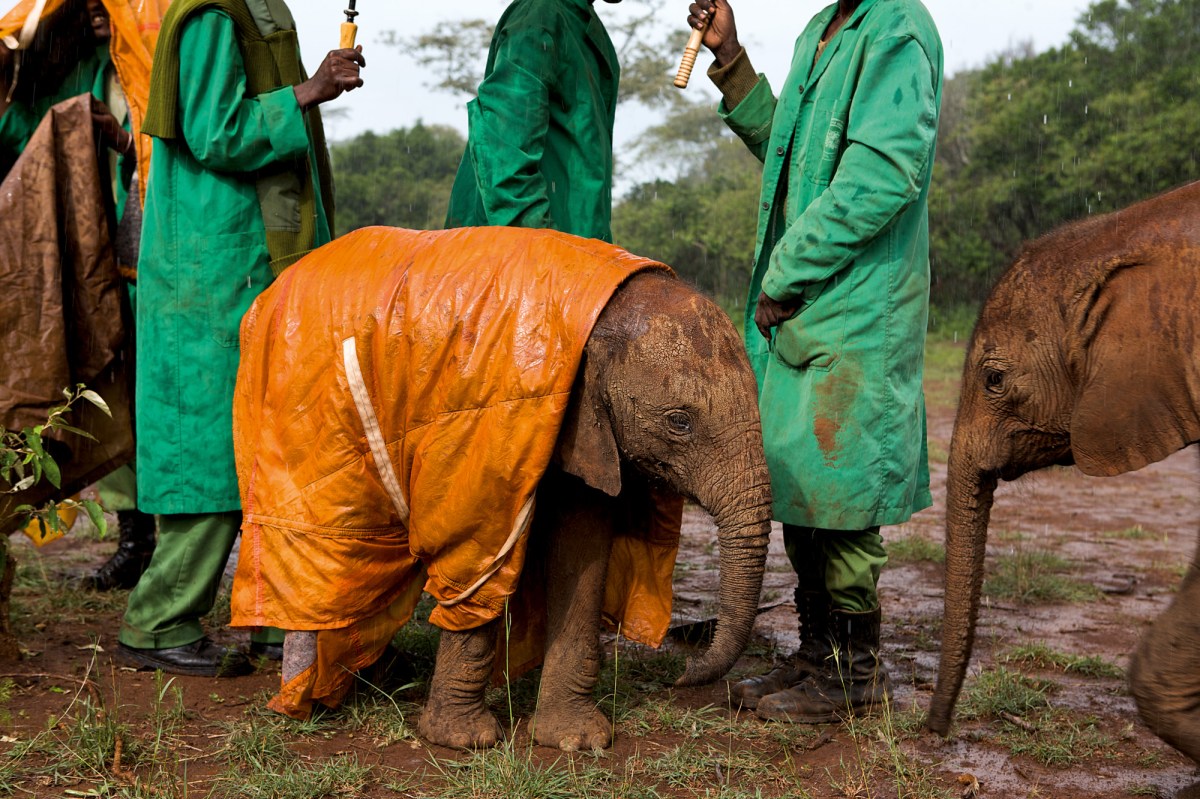
Baby elephant Shukuru, DSWT orphanage, Nairobi National Park, Kenya, 2010.
When Nichols announced he was bowing out of the game, his colleagues “freaked out.” His incredible stamina and brazen disregard for what his body could sustain made him seem superhuman—he’s been a constant for many people throughout their careers. But, he says, he just doesn’t have anything left to do with the camera. “I just wanted to stay on point the whole time,” he says. “And so that’s why I’m spent because I used it all up.” Now, Nichols sees his role shifting; he believes his job is to make a difference with his archive. “I will use what I’ve learned to be a senior citizen for the wild,” he says.
There is no doubt that Nichols has taken some of the most iconic wildlife photographs of this century. But, he alone knows the photographs he didn’t take. “You can’t depend on photography. You go out and you try and you stay focused, but in the end there’s something higher,” he says. “In the end I got what I had to get. But boy, what I didn’t get… the things I’ve seen that I couldn’t capture or didn’t translate. Because when you commit to still photography, you are committing to a moment.”
Nichols’ skill at distilling a complex struggle for survival into a single moment made him a valuable tool in conservation efforts—a fight he will continue even after he puts the camera down. “Even with this great divide we’re in right now, I’m convinced that we’re going to come out of it better,” says Nichols. “It’s about being honorable, because I believe that we can get it right before the end of the game. I pray for that. If you’re in my position you can’t think about the other side. You just keep fighting. And I fight with images.”
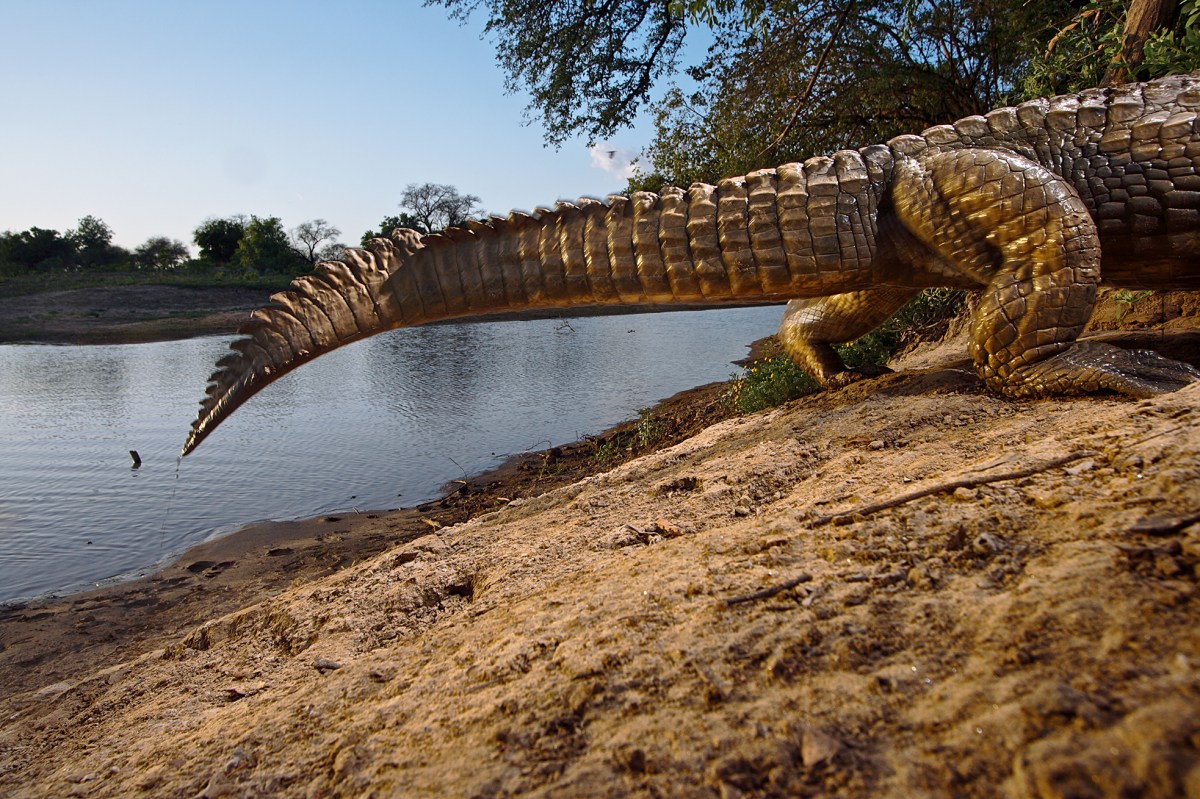
Crocodile (camera-trap photograph), Zakouma National Park, Chad, 2006.
Michael “Nick” Nichols is an award-winning photographer who worked on staff for National Geographic and became their editor-at-large for photography in 2008. He was also a member of Magnum Photos from 1982 to 1995. His biography, A Wild Life, is written by Melissa Harris and published by Aperture. It is available here. An exhibition of Nichols’ work, Wild: Michael Nichols, will be on display at the Philadelphia Museum of Art from June 27 to Sept. 17.
Alexandra Genova is a writer and contributor for TIME LightBox. Follow her on Twitter and Instagram.
Myles Little, who edited this photo gallery, is a Senior Photo Editor at TIME.
